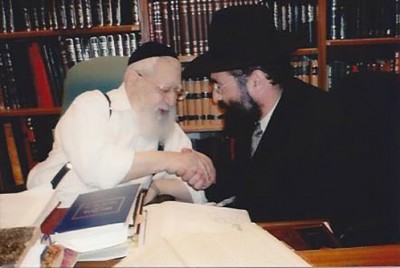
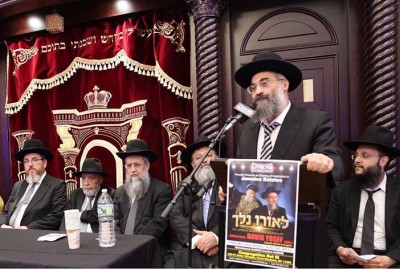
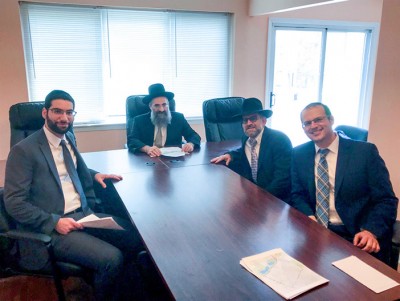
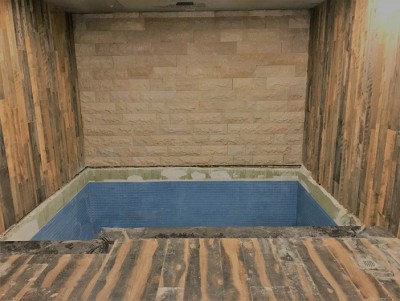
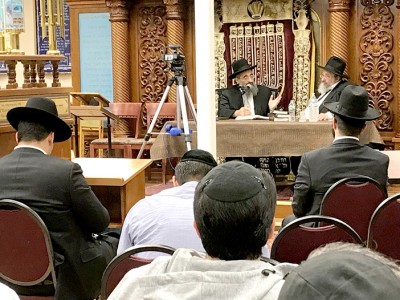

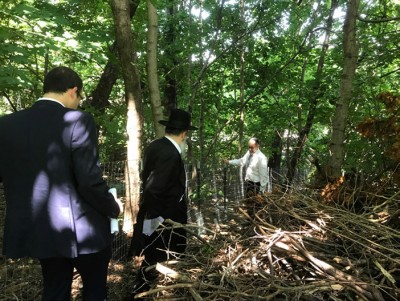
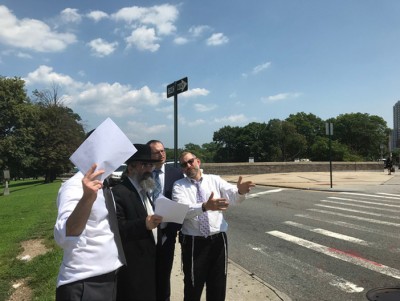
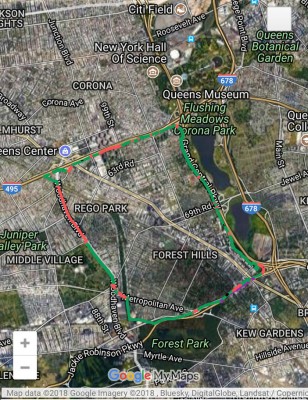
It has been almost a year since we last had the wonderful opportunity to interview Harav Yitzchak Yisraeli, who serves as the Chief Rabbi of the Bukharian Communities of America and Canada. Last we spoke, we focused primarily on Harav’s background, and connection to his teachers, Harav Ovadiah Yosef and Harav Ben-Tzion Abba Shaul, may their memories be a blessing for all the Jewish people. We also covered some of the projects that were in the planning stages, which have now begun to come to fruition. This interview will cover some of their details and stages, demonstrating the beautiful and ever-approaching future awaiting our community. The following interview is stylistically based on notes taken over a series of days and events in the presence of Harav Yisraeli:
BJL: Shalom Aleichem, Rebbi. It has been quite some time since we last had the chance to speak with Harav. The Queens Community must be keeping Harav very busy.
HYY: Shalom U’Berachah. Yes, it has been some time. Baruch Hashem this community is facing much growth in many different sectors. I am very proud to witness a different kind of growth finally taking place.
Last we spoke; I mentioned that I have been very much involved with the Bukharian community for over 20 years. I have seen the community take leaps and bounds after the destruction sowed by Communist Russia. However, the growth we are seeing now is different.
Up until a few years ago, the growth was focused more on restoring the crown of Bukharian Jewry in the basics of Torah and Avodah. Now, even though there continues to be progress in those areas, we are also seeing a new kind of progress; the community is becoming more and more self-sufficient. We are today exactly where the Syrian Jewish Community was 20 years ago. Their community began in the mid. 1930’s and ours began in the 1970’s, so we are doing very well.
BJL: Can Harav please specifically describe some examples of self-sufficiency?
HYY: The two items that stand out most are the new Mikvah, which is now almost complete in Beth Gavriel, and the newly updated Eruv of the Forest Hills area. There are other areas as well which are to remain private for now. At the same time, it is also important not to disregard the continuing development of our local Yeshivot, and even the possibilities of creating more and more schools to accommodate our children.
BJL: Why do the Eruv and Mikvah stand out on Harav’s list?
HYY: The Eruv and Mikvah stand out because since the establishment of a Bukharian Community in Queens, I do not recall any other Mikvah and Eruv designed with specifications like these.
The new Eruv itself was spearheaded by Rabbi Asher Schreier of the Young Israel of Forest Hills, who brought Rabbi Micah Shotkin in to work on the project. A few months ago, Both of these Rabbanim met me regarding updates they wanted to make for the Eruv together with our community. I made it clear that an Eruv would only be best if done in accordance with the opinion of the Rambam.
Understandably, this is no easy task due to multiple factors required to conform to the Rambam’s viewpoint. However, Rav Schreier and Rabbi Shotkin were adamant and jumped at the opportunity. I am happy to say that after touring and inspecting all the borders of the Eruv, I am very impressed by the work.
The new Eruv extends into many unconventional areas around Queens, requiring creativity and ingenuity in its construction. I will even go as far as to say that Rav Micah Shotkin must have had Azut D’Kedusha to accomplish a lot of what he showed me.
The Eruv is always an important topic in any community, because many of the community members are not familiar with the laws and status of their Eruv. To know that your community has one of the best Eruvin around should really bring joy and even relief to the community members, because carrying on Shabbat is no small matter.
Not only that, but the materials used for the new Eruv are much sturdier than the standard fare. Eruvin are infamous for collapsing during rain and snow storms, often stranding Jewish people right before Shabbat. Here, I saw lines made from metal, secured by metal rings and thick posts. All in all, I can testify after inspection that this new Eruv is reliable. I am proud to present the conclusion of this project to our community, which now benefits from the Halacha being kept in its optimal level.
BJL: That is great news. I’m sure all of our readers remember the stress caused by not knowing when an Eruv was up or down after a storm on Shabbat. Thank you for working with the Rabbanim and bringing this to bear.
HYY: The next topic I want to discuss is the new Mikvah in Beth Gavriel. This Mikvah has been in the works for a long time. Now we can finally see the end result for all of the past effort. But more than that, we can see a job very well done. The Mikvah is the center of Jewish living. Without a Mikvah, there cannot be a Jewish family according to Halacha. This is also why it is so important that all of the fine details of the Halachot regarding Mikvah are performed properly.
In order to ensure this, I checked the pipes used to transfer the water, the location on the roof which is collecting the rain water, the pits in the ground adjacent to the mikvaot which will contain the rainwater, and all the other various but important details. This Mikvah will not just be a luxury, but halachically sound; this is our goal and we are very close to achieving it.
When the Mikvah will be open for use, it will follow the guidelines set forth in the Halacha. We are currently working on those guidelines right now, and will have it ready Be’zrat Hashem when the Mikvah formally opens. We want to make sure that everyone who uses this Mikvah has a clear understanding of what is required. Also, clarity requires uniformity, and this is why the guidelines will be used by the entire Mikvah staff as well.
BJL: It is very nice to see the fruits of Harav’s labor. What other things had Harav been involved with over the year?
HYY: We have made a lot of progress in other areas as well. We have made many reforms and important changes in the area of Gerushin. We have similarly made takanot (improvements) in the how marriages are performed and the important record keeping necessary in ensuring the taharah of the Jewish people.
Importantly, much has also occurred in the field of kashrut in our community. This is always a sensitive topic, so I will not elaborate too much. The important thing to know is that there is always more to be done and we are working very hard.
Finally, a lot of work has been done in the area of outreach. This includes for younger children who attend public schools, as well as older children who come to learn in many of our programs and institutions.
The greatest growth, however, is the great unity taking place amongst the Bukharian Rabbanim. When the community works together, there is so much that can be accomplished. Together, I believe we can do so much more. There is unfortunately a lot of work which needs to be done, but there is also the strength necessary to succeed when we are unified.
BJL: Thank you kvod Harav for the interview and all the things taking place in the community.
Catching Up With the Bukharian Chief Rabbi: Harav Yitzchak Yisraeli Discusses Community Growth
Typography
- Smaller Small Medium Big Bigger
- Default Helvetica Segoe Georgia Times
- Reading Mode




